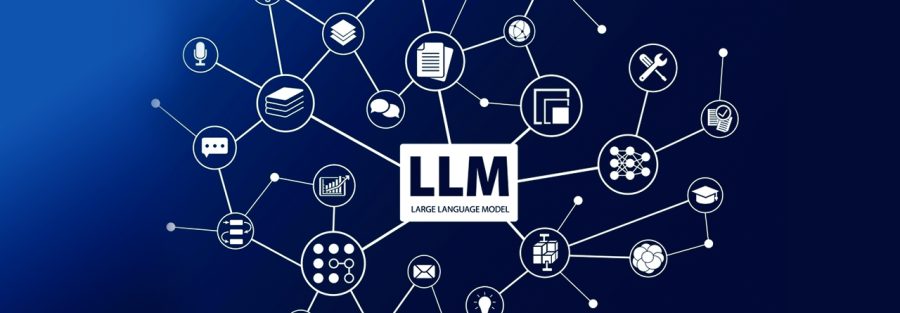Maximizing Efficiency and Minimizing Costs: Harnessing the Power of Large Language Models (LLMs)
In the era of Generative AI, Large Language Models (LLMs) stand as the pinnacle of innovation, transforming how we interact with technology. These AI powerhouses wield the ability to craft creative content, translate languages, provide informative responses, and even produce human-quality text. However, amidst this brilliance lies a challenge: the cost. In this comprehensive guide, we’ll explore the realm of LLMs, their diverse applications across industries, and unveil strategies to make their utilization cost-effective.
By implementing these tactics, you can leverage the potential of LLMs without straining your budget.
Demystifying LLMs:
Peering Under the Hood LLMs, as generative AI models, operate by analyzing extensive text datasets to discern patterns and relationships between words. This intricate understanding enables them to predict subsequent words in a sequence, culminating in the generation of coherent and relevant textual outputs. There exist two primary LLM architectures:
- Transformer-based Models: Notable examples include GPT-3 and Jurassic-1 Jumbo. These models rely on transformer deep learning architectures renowned for their adeptness in comprehending long-range textual dependencies. Consequently, they excel in tasks such as summarization and question answering.
- Autoregressive Models: Models like BERT predict forthcoming words based on preceding ones. While slightly less potent than transformers in certain aspects, autoregressive models often boast quicker processing times and increased interpretability.
Where LLMs Flourish: Real-world Applications LLMs find application across a myriad of industries, mirroring the expanse of the datasets they’re trained on. Here’s a glimpse into their diverse utility:
- Customer Service: Powering chatbots to address customer queries, troubleshoot issues, and tailor personalized product recommendations.
- Content Creation: Crafting marketing copy, social media posts, and even scripting videos and presentations.
- Software Development: Assisting developers in code composition, task automation, and debugging endeavors.
- Education: Personalizing learning journeys, providing feedback on student writing, and generating practice exercises.
Unlocking the Benefits of LLMs: Catalyzing Industry Evolution The adoption of LLMs heralds an array of benefits:
- Heightened Efficiency: Automating erstwhile labor-intensive tasks liberates human resources for strategic endeavors.
- Enhanced Accuracy: LLMs meticulously analyze data to unveil patterns, enhancing decision-making precision.
- Fostering Creativity: LLMs spur innovation by generating novel ideas and content formats.
- Tailored Experiences: Personalizing responses fosters engagement, rendering experiences more immersive.
Taming the Cost Beast:
Strategies for Affordable LLM Integration While the allure of LLMs is undeniable, their computational prowess often comes at a premium. Here’s a compendium of strategies to curtail implementation costs:
- Optimal Model Selection: Resist the allure of larger models; explore smaller, efficient alternatives tailored to your specific needs.
- Fine-tuning Efficacy: Tailor LLMs to your domain or task for enhanced performance and reduced computational overhead.
- Precision in Prompting: Craft clear, concise prompts to guide LLMs toward desired outcomes, curbing unnecessary computations.
- Harnessing Batch Processing: Consolidate requests to expedite processing, fostering efficiency and cost savings.
- Strategic Caching: Store frequently used outputs to obviate redundant computations, particularly beneficial for repetitive tasks.
- Knowledge Distillation: Transfer knowledge from larger, costly models to more efficient counterparts, preserving capabilities at reduced costs.
- Pruning for Efficiency: Streamline model architecture by eliminating superfluous elements, minimizing computational requirements without compromising performance.
- Timely Halts: Cease LLM operation upon achieving acceptable outputs to avert unnecessary expenses.
Best Practices for Cost Reduction:
A Detailed Overview Now that we’ve navigated the landscape of LLMs and their applications, let’s delve deeper into cost-effective implementation strategies, accompanied by specific techniques and comparisons.
Benchmarking Costs: Unveiling GPT-3 vs. GPT-4 A comparative analysis of estimated inference costs per model for GPT-4 Turbo and GPT-3.5 Turbo sheds light on potential expenditures:
- Cost per 1 million Input Tokens:
- GPT-4 Turbo: Approximately $10-20
- GPT-3.5 Turbo: Around $6-10
- Cost per 1 million Output Tokens:
- GPT-4 Turbo: Estimated at $15-25
- GPT-3.5 Turbo: Ranging from $8-12
Benchmarking via Hugging Face: Leveraging the Platform for Informed Decisions Hugging Face Transformers offers an invaluable platform for benchmarking diverse LLM models, enabling comparison of inference speeds and potential costs, aiding in optimal selection.
Comparing LLM Provider Pricing Models: Tailoring Solutions to Specific Needs Various providers offer distinct pricing structures, including pay-per-token, tiered pricing, and fixed monthly fees. The choice depends on individual requirements and usage patterns, necessitating careful consideration.
Multi-Modal Routing: Optimizing Resource Utilization Implementing multi-modal routing directs requests to the most suitable LLM for the task, optimizing cost-effectiveness. This adaptive system intelligently allocates resources, maximizing efficiency.
Building Custom LLM Routers: Navigating Efficiency with LLamaIndex, LLamaIndex facilitates the creation of custom routers, directing requests to the most apt and economical LLM model. Leveraging this tool enhances cost-efficiency and performance.
Prompt Compression: Maximizing Impact with Minimalism Concise prompt engineering reduces computational load, enhancing cost-effectiveness without compromising clarity or efficacy.
Leveraging Compression Frameworks: Embracing Efficiency with LLMLingua, LLMLingua offers a framework for compressing LLM outputs, minimizing storage requirements and potentially lowering transmission costs.
Memory Management: Balancing Performance and Economy Effective memory management strategies, including context window size limitation and batching, optimize cost without sacrificing performance.
Semantic Caching: Amplifying Savings through Efficiency Semantic caching conserves costs by storing frequently used LLM outputs, mitigating redundant computations and improving overall efficiency.
Rate Limiting Techniques: Preventing Costly Overflows Implementing rate limiting mechanisms safeguards against excessive requests, ensuring optimal LLM utilization within budgetary confines.
Conclusion: Large Language Models present boundless opportunities for innovation across industries. By employing judicious strategies for cost reduction, enterprises can harness the transformative power of LLMs while maintaining fiscal prudence. As you embark on your AI journey, remember efficiency is the key to unlocking the full potential of LLMs.
Ready to optimize your AI solutions with cost-effective LLM implementations? CloudJune offers tailored solutions to meet your needs. Explore our range of services today and revolutionize your business with the power of AI.
Contact CloudJune at info@cloudjune.com to discover how we empower enterprises with cost-effective Generative AI Solutions tailored to diverse industries.




